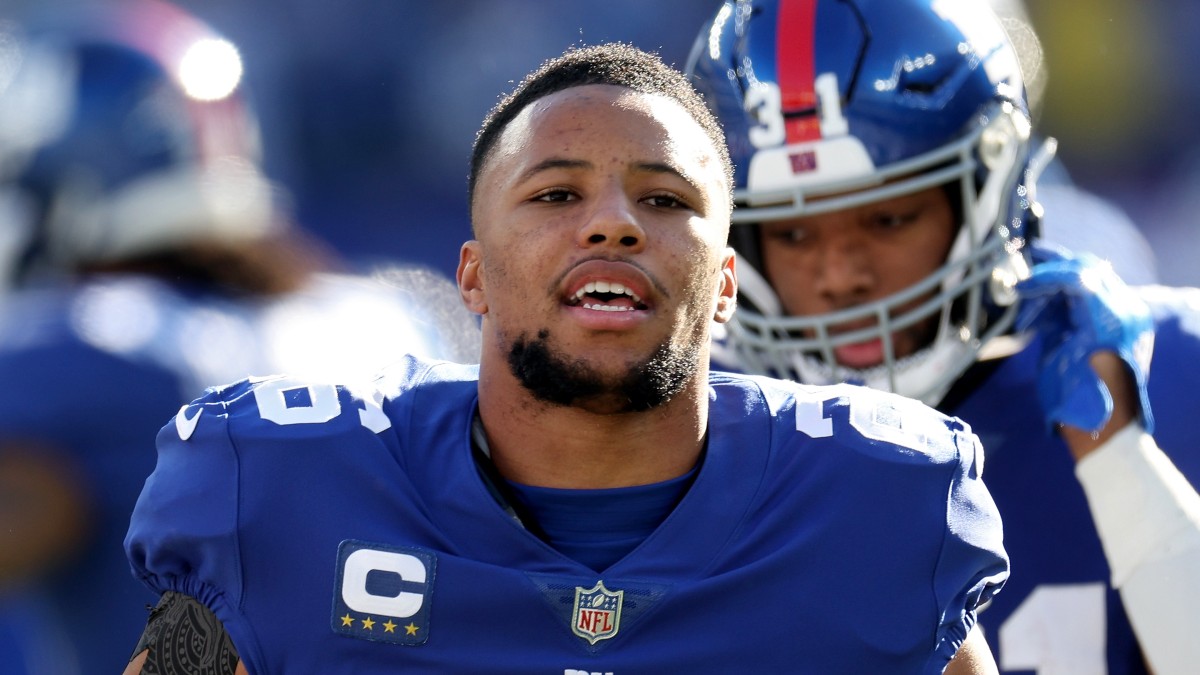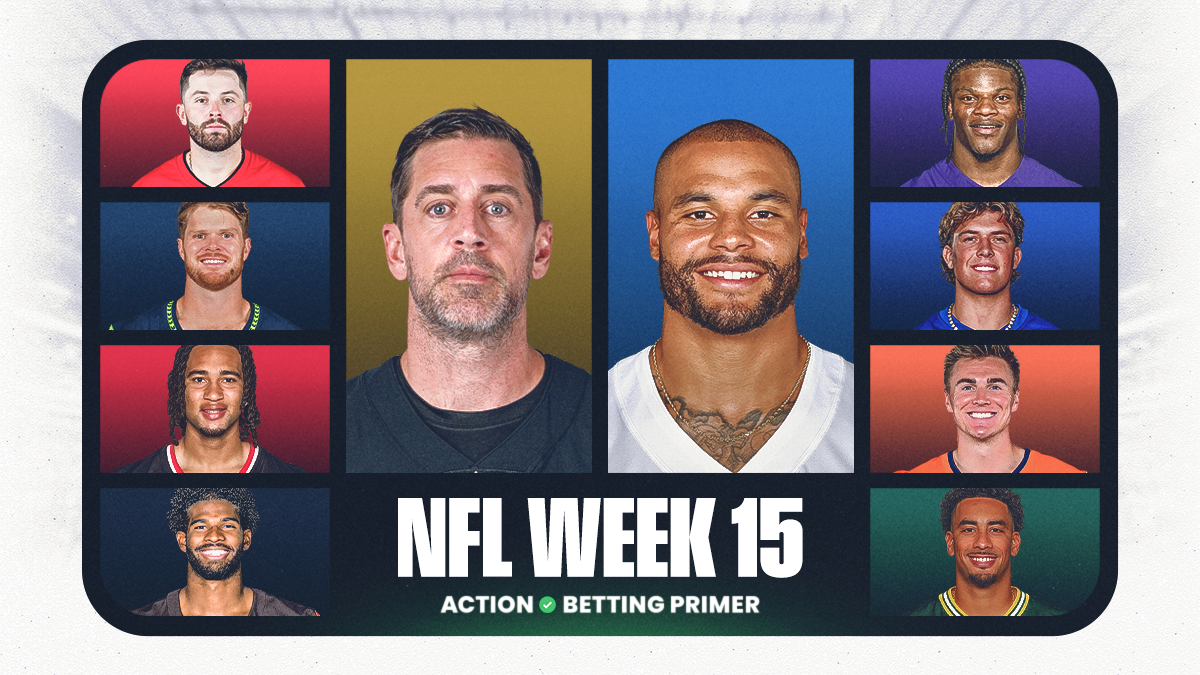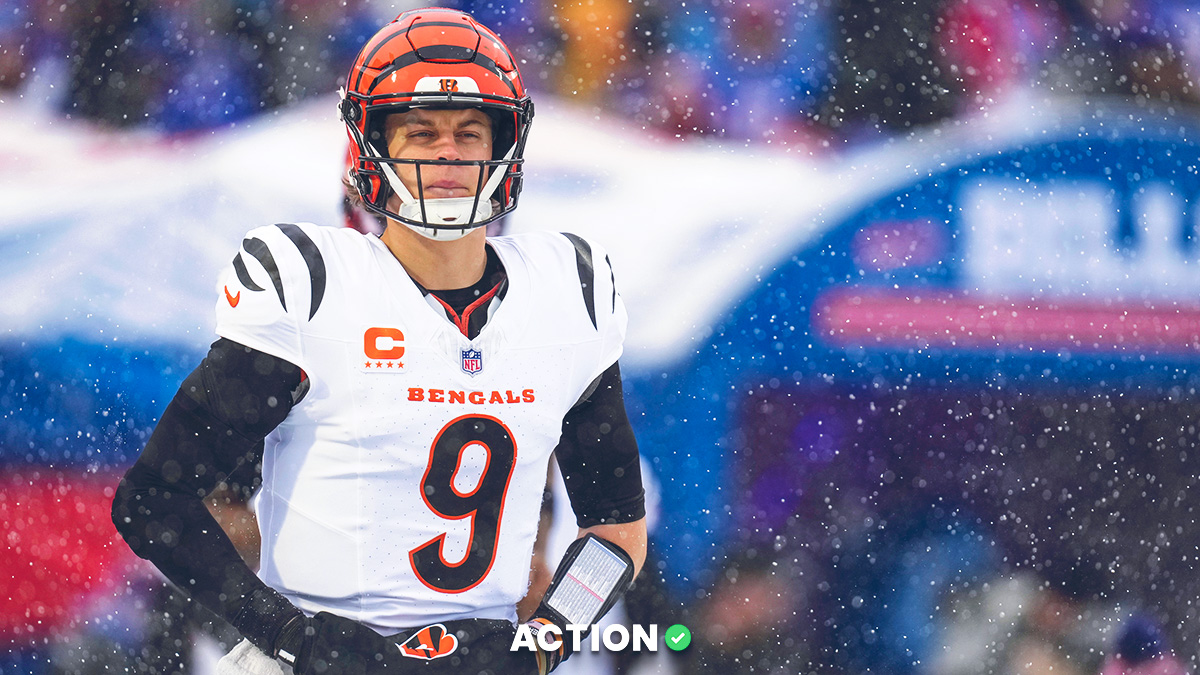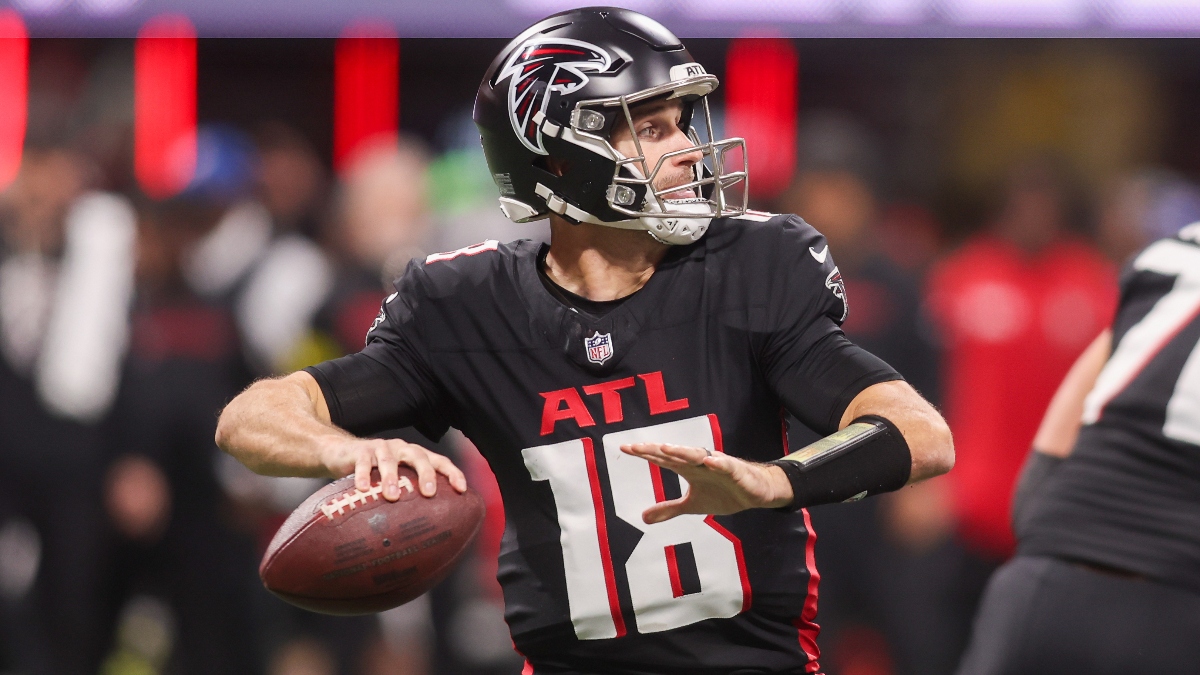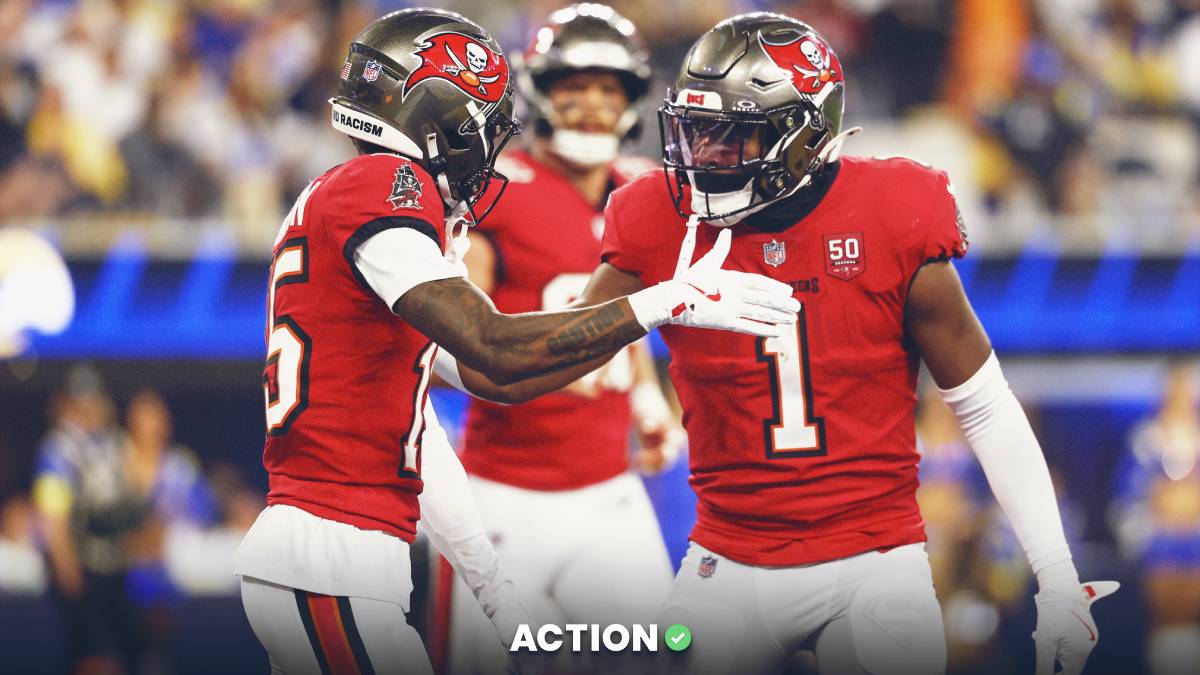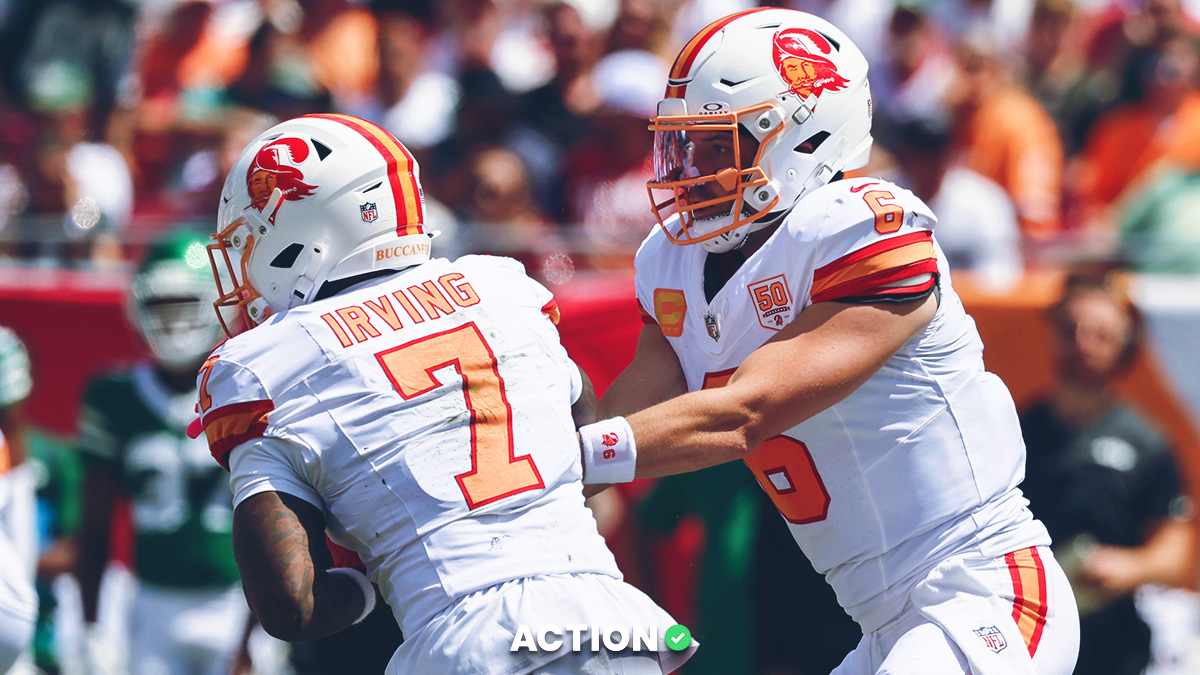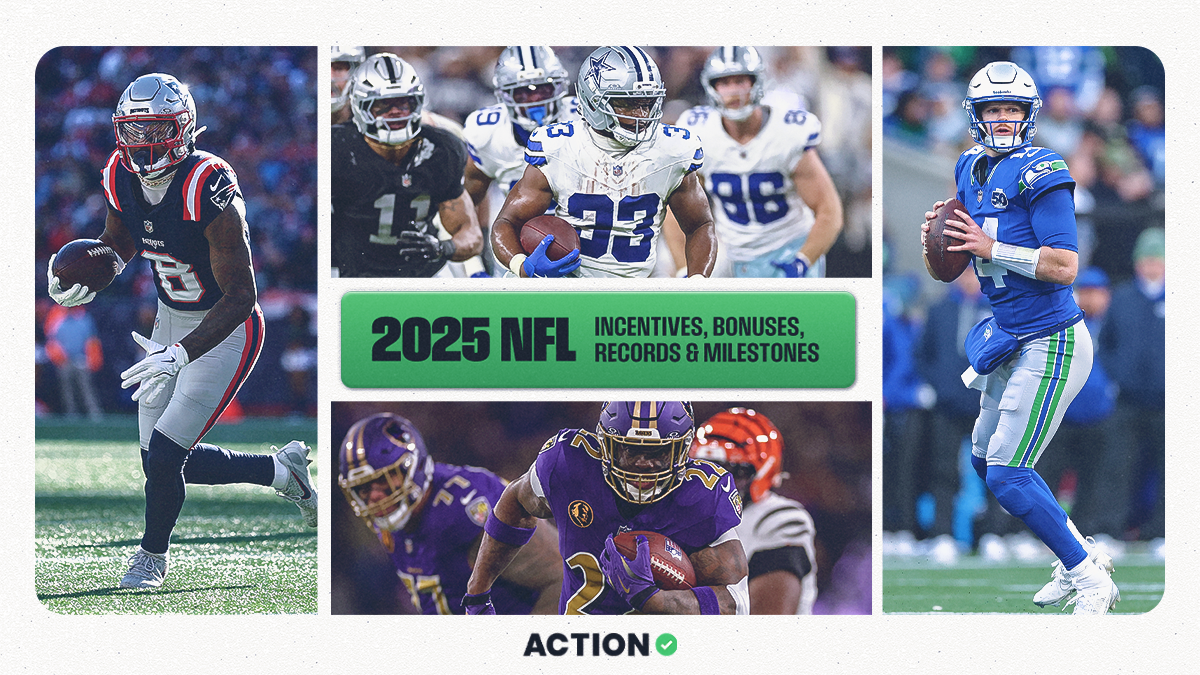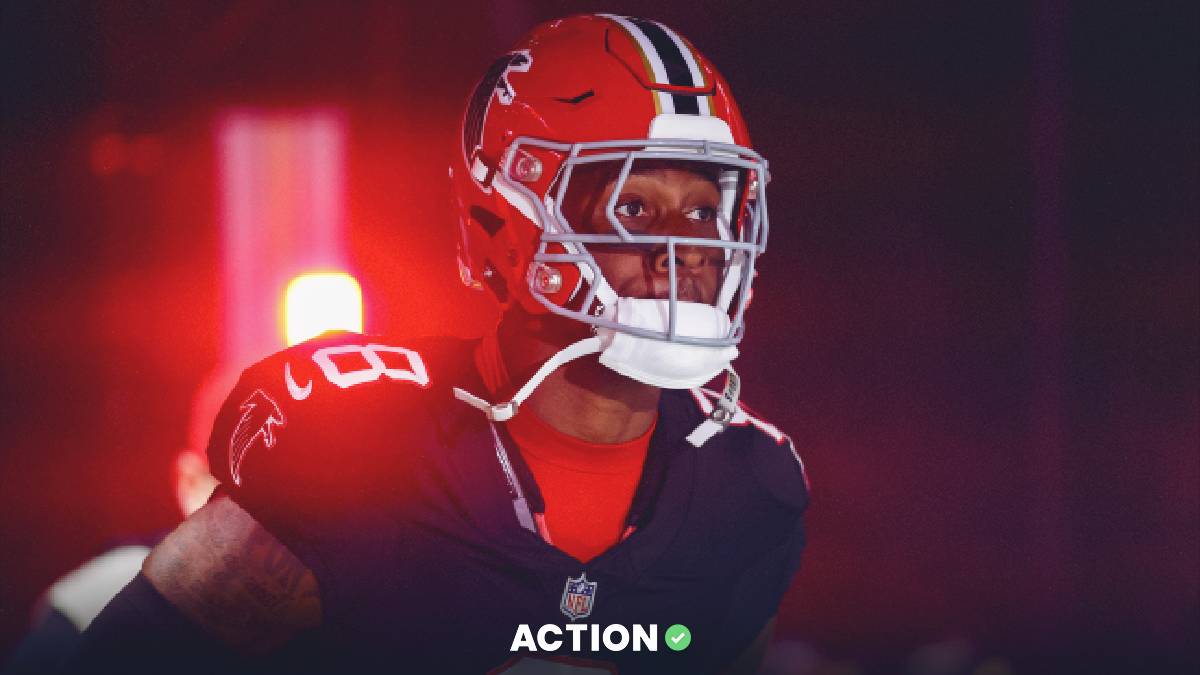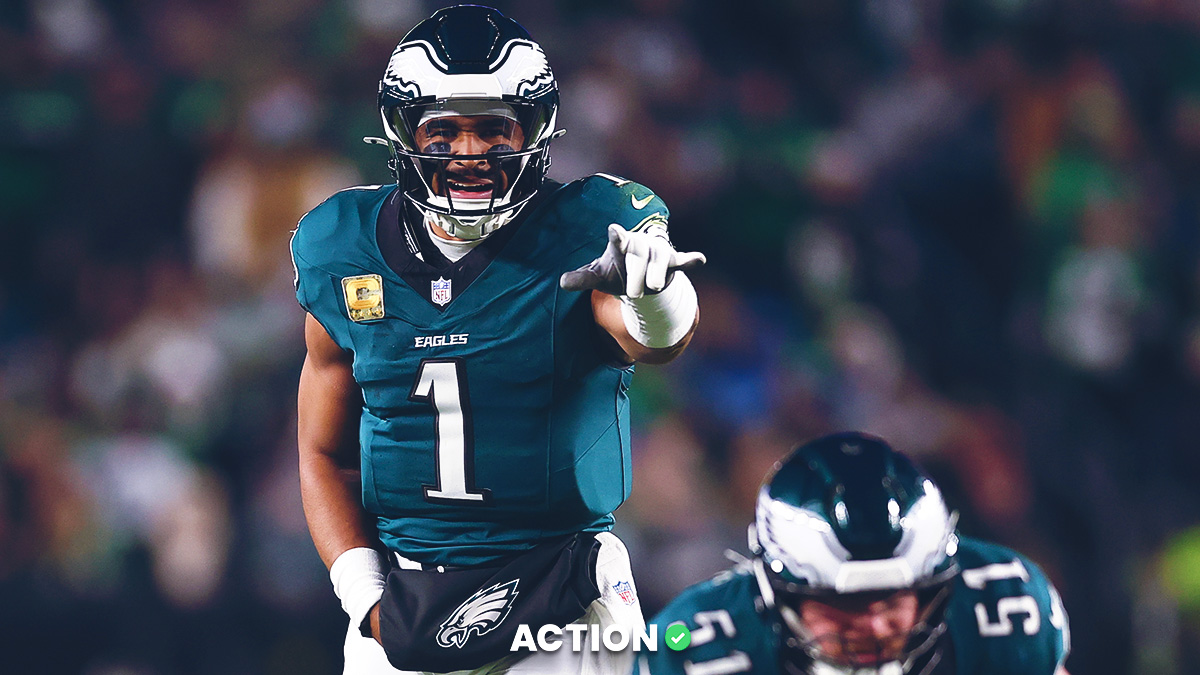It was an eventful first day of free agency, with multiple key skill players on offense finding new homes. The two biggest names were running backs Saquon Barkley and Josh Jacobs.
Let's break down each running back's fit with his new team, starting with Barkley's move south from New York to Philly.
Registration is live for the best North Carolina sports betting apps! Register for bonus offers right now!
Saquon Barkley
Barkley agreed to a three-year contract worth up to $37.8 million with more money in guarantees ($26 million) than the total value of 2023 starter D’Andre Swift’s new contract with the Bears (three years, $24 million), marking Eagles general manager Howie Roseman’s biggest move at running back since signing LeSean McCoy to a five-year, $45 million extension in 2012. This likely means that the Eagles envision Barkley as more than just a one-for-one Swift replacement, and that’s a good thing for fantasy managers since Swift finished a middling RB24 in both PPR and half-PPR points per game. In a down year, Barkley still finished RB9 in PPR and RB8 in half-PPR points per game.
Barkley is an upgrade over Swift in three key ways:
1) Yards after contact (YCo): According to Pro Football Focus (PFF), Barkley averaged 2.91 YCo per attempt last year and 2.99 for his career – roughly a half-yard better than Swift’s 2.42 mark last year and his 2.53 career average. Swift’s 54.1% rushing success rate last season was sixth among running backs, so it’s conceivable that Barkley would have challenged for the league lead had he been the RB1 in Philly last season.
2) Pass protection: Barkley earned a pass-blocking grade of 76.6 from PFF last season, which ranked 19th of 138 qualified running backs, while Swift’s 47.9 grade clocked in 86th. This is good for Barkley’s real-life value, but it may not help him improve on last year’s career-low 2.9 receptions per game since Jalen Hurts’ scrambling ability makes him less likely to check the ball down.
3) Every-down ability: Barkley averaged 20.6 touches per game last season and 20.1 for his career while Swift averaged 16.8 last year and 14.1 for his career. Given this type of contract is not the norm for Roseman, it’s possible that he envisions Barkley playing a similar role with the Eagles as Christian McCaffrey plays with Philadelphia’s top NFC rival, the 49ers.
Given Barkley’s skill set and contract relative to the man he is replacing in Swift, it’s fair to project Barkley for a similar role to what he had with the Giants in terms of snaps and carries, though with fewer receptions. It’s also fair to project an efficiency increase since Barkley goes from a Giants offensive line that ranked 32nd in Adjusted Line Yards (3.35) to an Eagles unit that ranked 14th (4.21), per FTN Fantasy, and from a Giants passing offense that ranked 30th in DVOA to an Eagles pass offense that ranked 12th.
The biggest question mark is Barkley's touchdown equity. His touchdown share will undoubtedly go down with Jalen Hurts taking over 40% of the carries inside the 10-yard line and over 50% inside the 5, but that doesn’t necessarily mean Barkley will have few opportunities to score touchdowns. Consider that Barkley averaged 1.1 carries per game inside the 10 and 0.4 carries per game inside the 5 as the Giants' main option last season while Swift averaged 1.7 carries per game inside the 10 and 0.6 carries per game inside the 5 despite splitting opportunities with Hurts.
Barkley missed 14 games in 2020 due to an ACL tear and four or fewer games in each of his other five pro seasons, so his main durability questions come from his age (27). While every running back at age 27 will have elevated injury risk compared to younger backs, the good news for Barkley is most of his statistical decline can be attributed to the deterioration of his supporting cast rather than to his own skills eroding.
Verdict: Going from the Giants to the Eagles essentially widens his range of outcomes on both the high and low end. When he is on the field, Barkley's ceiling is a similar season to a poor man’s version of 2023 McCaffrey, and his floor is a similar season to 2023 Swift. Split the difference and he should enter 2024 valued as a low-end RB1.
Josh Jacobs
Jacobs signed a four-year contract with the Packers worth up to $48 million but with only $12.5 million in guarantees. In a corresponding move, Green Bay released longtime RB1 Aaron Jones, saving $5.22 million against the cap.
While it makes sense why the Packers would move on from an expensive running back who will turn 30 this season to a back who just turned 26, there's reason to believe Jacobs will not be an upgrade. According to PFF, Jones averages 3.20 YCo for his career and averaged 3.16 YCo last season. Jacobs averages 3.01 for his career but posted a career-low 2.35 mark last season. In terms of the passing game, Jones averages 1.24 yards per route run (YPRR) for his career and averaged 1.40 YPRR last season while Jacobs averages 1.15 YPRR for his career and averaged 1.24 YPRR last season.
Can Jacobs bounce back? Sure, and he’ll likely benefit from a better offensive line, as Green Bay was eighth in Adjusted Line Yards (4.37) while Las Vegas was 16th (4.19), per FTN Fantasy. However, it is concerning that Jacobs’ worst season is his most recent, especially since he has nearly as many regular and postseason touches (1,519) entering his age-26 season as Jones does entering his age-30 season (1,577), meaning he is averaging over 300 touches per season.
Jacobs never quite passed the eye test for me last season, so I was not surprised to see him earn career-low PFF grades across the board:
- Offense: 65.0 (previous low 76.3 in 2020)
- Rushing: 70.1 (previous low 79.4 in 2020)
- Receiving: 51.0 (previous low 55.4 in 2019)
- Pass Blocking: 50.9 (previous low 56.3 in 2022)
Jacobs was the RB17 in PPR points per game and the RB18 in half-PPR points per game in 2023 while handling 20.8 touches per game. When he posted a top-five fantasy season in 2022, he averaged 23.1 touches per game. Meanwhile, no Packers running back has averaged more than 17.8 touches per game in five seasons under Matt LaFleur.
In a best-case scenario, Jacobs is used like Jones was over the final five games of 2023, when he averaged 22.6 touches per game. The danger with projecting that kind of usage for Jacobs is that (1) Jones averaged 5.7 yards per carry (YPC) during that stretch, and it is questionable whether LaFleur would use Jacobs that much if his efficiency was more in line with his career average of 4.2 yards per carry, and (2) that stretch included the team’s most important stretch of the season, including two playoff games, and it remains unclear if LaFleur would be willing to give a back that type of usage over a full season.
There’s also the fact that while the Packers backfield ranked in the top 10 in fantasy points in LaFleur’s four seasons with Aaron Rodgers as the QB1, it dropped to bottom-eight in Jordan Love’s first year, ranking similarly to the Raiders, who were 26th in both PPR and half-PPR formats.
Verdict: Ultimately, while Jacobs finds himself in a better offense in 2024, his career wear, 2023 decline, LaFleur’s backfield usage history, Jacobs’ modest guarantees and the Green Bay backfield’s fantasy production in Love’s first year as a starter combine to give Jacobs a substantial amount of risk. While his ceiling remains similar to his 2022 season or Jones’ final five games of 2023, it’s far more likely he will end up producing similarly to 2023. In a worst-case scenario where his 2023 decline was a sign of things to come, he could even end up as a touchdown-dependent early-down plodder.


